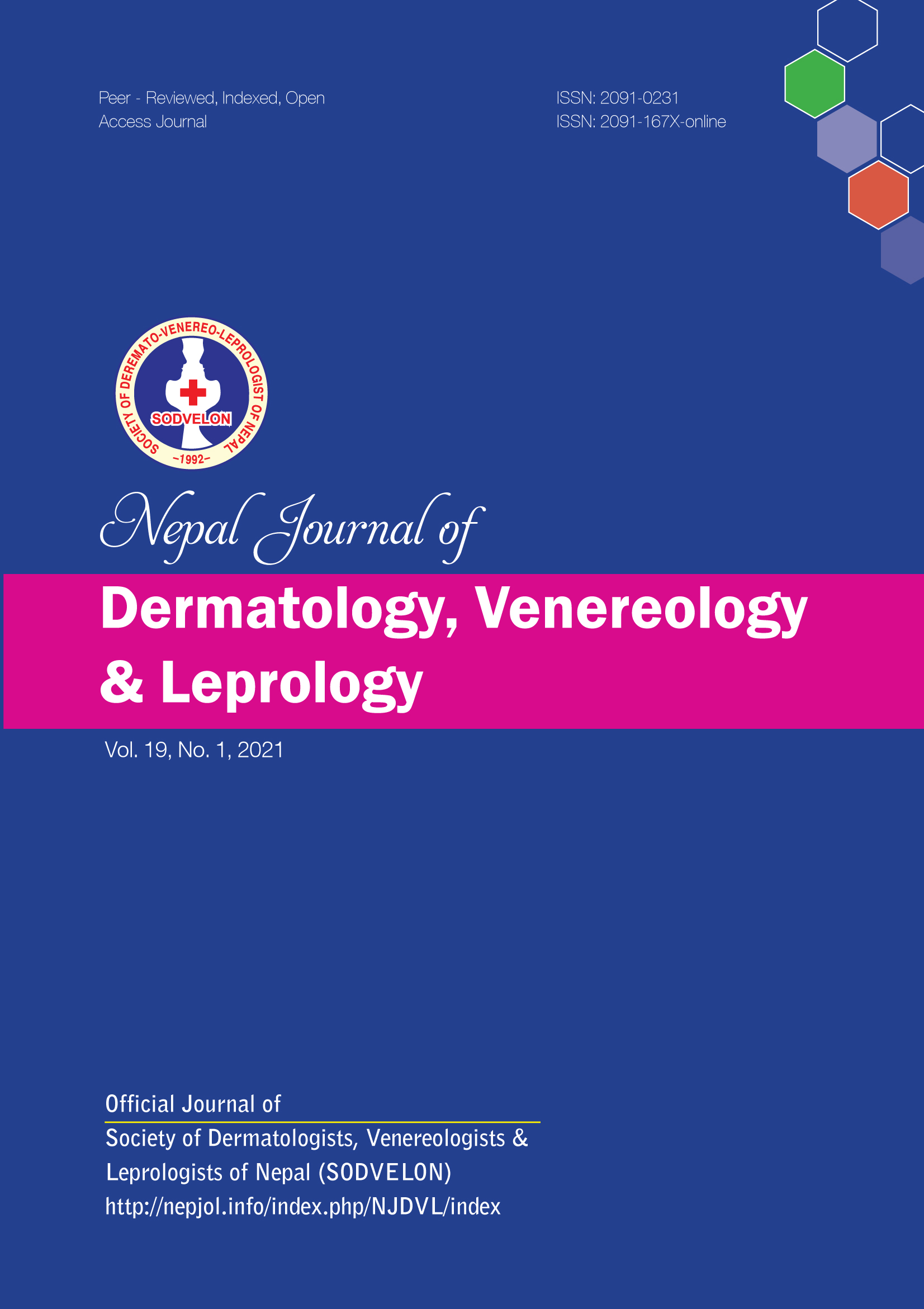Cutaneous Manifestations in Renal Transplant Recipients
DOI:
https://doi.org/10.3126/njdvl.v19i1.35953Keywords:
Renal transplant recipients, cutaneous manifestationsAbstract
Background:The availability of potent immunosuppressants has paved the path towards decreased incidence of graft rejection and long term survival of the renal transplant recipients. But, with the increased life span of the patients and long term use of immunosuppressants, there has been an increase in various skin conditions; ranging from various infections to some life-threatening cutaneous malignancies.
Objectives:This study was carried out to determine the pattern of different cutaneous manifestations in renal transplant recipients at Tribhuvan University Teaching Hospital, to identify the infectious and non-infectious skin manifestations in these patients and their relation with the duration of transplantation.
Methodology:The present study was a hospital based cross-sectional descriptive study conducted at Tribhuvan University Teaching Hospital, Kathmandu; Department of Internal Medicine, Transplant Outpatient department and Outpatient department of Department of Dermatology from June 2013 to May 2014. A total of 114 renal transplant recipients were enrolled in the study.
Results:A total of 114 renal transplant recipients with a mean age of 37.56±11.10 years were studied. The immunosuppressive regimen consisted of combinations including tacrolimus, prednisolone, mycophenolate mofetil/azathioprine along with supportive medications like antivirals, antibiotics and antihypertensives. Out of all those studied, 60 patients had a total of 61 cutaneous manifestations. The mean duration from date of transplantation to presentation to the transplant OPD for infectious dermatoses was 688.4 days (1.88 years) and for iatrogenic dermatoses was 67.5 days. The most common cutaneous manifestation was acne (41%) followed by fungal infections (27.9%) consisting of pityriasis versicolor (n=9), dermatophytosis (n=6) and candidiasis (n=2); viral infections (18%) consisting of verruca (n=4), herpes zoster (n=4) and herpes simplex (n=3); bacterial infections (4.9%) consisting of folliculitis (n=2) and erythema chronicum migrans (n=1). Gingival hyperplasia was observed in a single patient. Other cutaneous manifestations like seborrheic dermatitis and xerosis were also observed in 2 patients each during the study.
Conclusion:
Renal transplant recipients are susceptible to acquire various cutaneous manifestations as a result of long term immunosuppression and also due to adverse effects of the drugs used. This knowledge helps the transplant physicians for regular dermatologic screening of these patients for early diagnosis and treatment of the skin lesions.
Downloads
Downloads
Published
How to Cite
Issue
Section
License
Copyright on any research article is transferred in full to Nepal Journal of Dermatology, Venereology & Leprology upon publication. The copyright transfer includes the right to reproduce and distribute the article in any form of reproduction (printing, electronic media or any other form).




